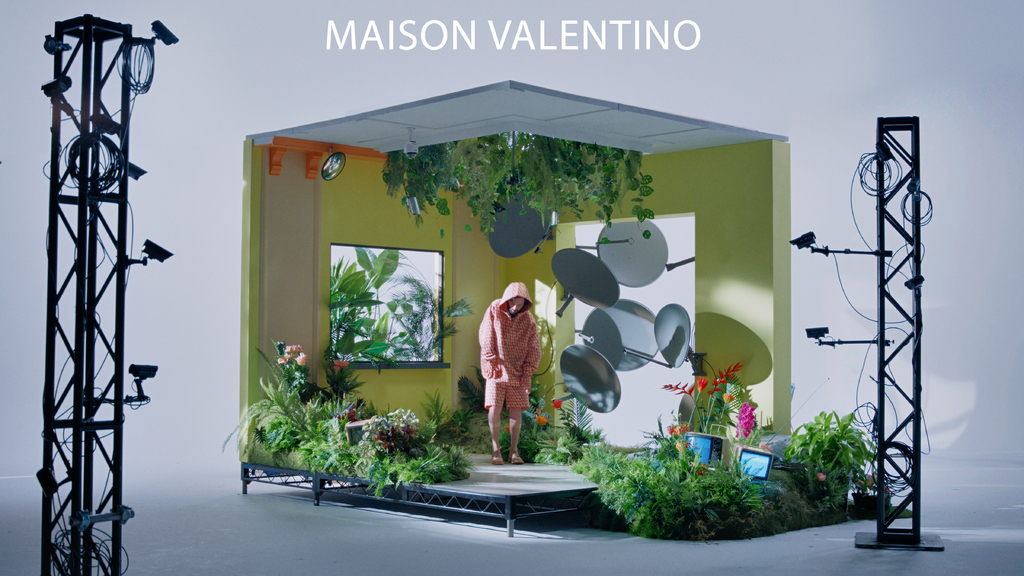Virtual productions have ushered in a new era of innovation in the film business by allowing for the seamless integration of virtual and physical elements in the creation of breathtaking movies. In this essay, we will go into the realm of virtual production, discussing its definition as well as its core technologies, applications, cost concerns, and the potential it possesses for the future. The intriguing world of virtual production is waiting for you to explore it, and Frender, a top video production firm, welcomes you to do just that.
- Principal Technologies Used in Virtual Production
- Increasing the Feeling of Physical Presence Through LED Volume
- Bringing Characters to Life Through real-time Motion Capture Technology
- Expanding Creative Possibilities Through the Use of Virtual Cameras
- Applications of Virtual Production
- Streamlining the pre-production process with previsualization and storyboarding
- The Integration of Visual Effects: How It Improves Post-production
- Live Broadcasting and Streaming: Entertaining Groups of People in the Here and Now
- What is the cost of Virtual Production?
- Future of Virtual Production
- Conclusion
Exploring the World of Virtual Production

The innovative process known as "virtual production" brings the "real" and "virtual" worlds closer together by utilizing cutting-edge technologies in a coordinated effort. Virtual productions offer creative options and a level of realism that has not been seen before since they make use of cutting-edge technology like as LED walls, real-time motion capture, and virtual cameras.
Principal Technologies Used in Virtual Production
Increasing the Feeling of Physical Presence Through LED Volume
LED volumes are increasingly being used in place of traditional green screens in virtual productions. The process of filming is being revolutionised because to these enormous LED walls' ability to generate hyper-realistic settings. Using the power of LED volumes, films like "Avatar" and "The Jungle Book" have been able to transport viewers into enthralling virtual worlds. The use of LED volumes has a tremendous effect on the process of filmmaking because they enable filmmakers to visualise and record situations in real time with an accuracy that is previously unattainable. Virtual film production has been revolutionised as a result of the combination of virtual production technology with LED volumes, which has led to the breaking of barriers and the delivery of immersive cinematic experiences.

Bringing Characters to Life Through real-time Motion Capture Technology
Another essential piece of technology for virtual production is the capturing of real-time motion. It records the performances of performers in real-time and then converts those performances into computer-generated three-dimensional characters. Movies like "Avengers: Endgame" and "War for the Planet of the Apes" demonstrate the power of real-time motion capture when it comes to producing artificial characters who look and act like real people. This technology has brought about a significant advancement in the field of virtual video production. It now enables filmmakers to merge real-time performers with virtual components in a seamless manner, producing performances that are fascinating and authentic.
Expanding Creative Possibilities Through the Use of Virtual Cameras
Virtual cameras are an essential component of virtual production, since they provide fresh angles of view and broaden the scope of possible creative expressions. Filmmakers may now shoot images from previously inaccessible perspectives and smoothly navigate immersive virtual spaces thanks to these cameras. It is possible for filmmakers to reach a high level of cinematic brilliance by working with virtual production studios and procedures. Case studies of films such as "Ready Player One" demonstrate how virtual cameras blur the boundaries between reality and fantasy, engaging audiences with dazzling graphics in the process.
Applications of Virtual Production
Streamlining the pre-production process with previsualization and storyboarding
The ability to perform previsualization and storyboarding is one of the ways that virtual production helps to streamline the pre-production process. Filmmakers are able to visualize sequences and animate storyboards, which provides them with a more complete knowledge of their concept. Pre-production preparation can be improved with the use of virtual production workflows and sets, which saves both time and resources during the actual filming process.

The Integration of Visual Effects: How It Improves Post-production
The integration of live-action film and virtual elements into a virtual production is done in a seamless manner, which improves post-production procedures. Filmmakers have the ability to produce jaw-dropping visual effects that take their storytelling to the next level when they combine virtual production technology with visual effects. Movies like "Inception" and "Avengers: Infinity War" are excellent examples of how effectively virtual aspects may be integrated into a film, which pushes the limits of what is possible in terms of visual effects in contemporary cinema.
Live Broadcasting and Streaming: Entertaining Groups of People in the Here and Now
Live broadcasts and online streaming events have both been significantly altered by the introduction of virtual production. Filmmakers are able to transport live audiences into intriguing virtual worlds by employing virtual production studios and workflows. It has been demonstrated that live concerts, gaming events, and award shows may all benefit from the incorporation of virtual productions, resulting in unforgettable experiences for the audience.
What is the cost of Virtual Production?

The implementation of technologies for virtual production comes with a variety of prices. Investing in hardware, software, experienced technicians, and virtual production studios is necessary in order to implement a virtual production pipeline. The intricacy and scale of the project can have an effect on the costs. The infrastructure required for effective virtual productions can be provided by virtual production studios, albeit these studios may require additional financial resources to operate. It is absolutely necessary for production teams to carefully plan and allot finances in order to make the most of the benefits offered by virtual production.
Future of Virtual Production
Emerging technologies are going to push the boundaries even further in the future, which bodes well for the future of virtual production. The development of new technologies for virtual production, as well as virtual production facilities and workflows, will make it possible to achieve previously unimaginable levels of realism, efficiency, and creative potential. As the motion picture business continues to develop, virtual production will become an increasingly important factor in the formation of the narrative landscape of the future.
Conclusion
The film and vidoe production industry has been completely disrupted and completely revolutionised as a result of the introduction of virtual production. Filmmakers are able to craft experiences that are not only immersive but also visually appealing because of the utilisation of cutting-edge technologies such as LED volumes, real-time motion capture, and virtual cameras. We as an innovative video production business Frender recognises the potential that may be realised via the use of virtual production. As the industry develops, virtual production will continue to be a driving force behind innovation and will have a significant impact on the direction filmmaking will take in the future. Discover the mesmerising world of virtual production, and prepare to go on an incredible adventure through the pinnacle of cinematic achievement.



%20Image%202_1024x0_d94.jpg)
